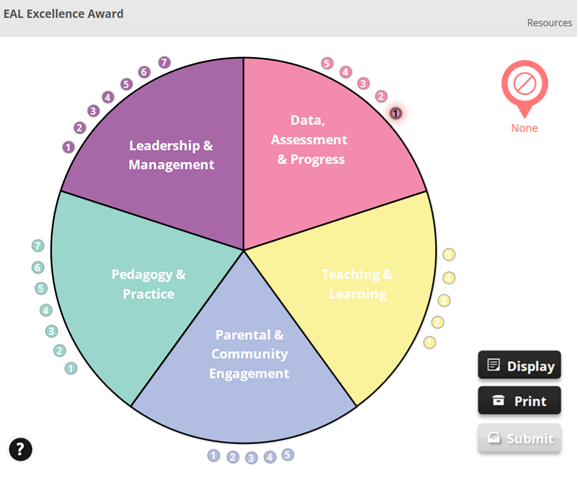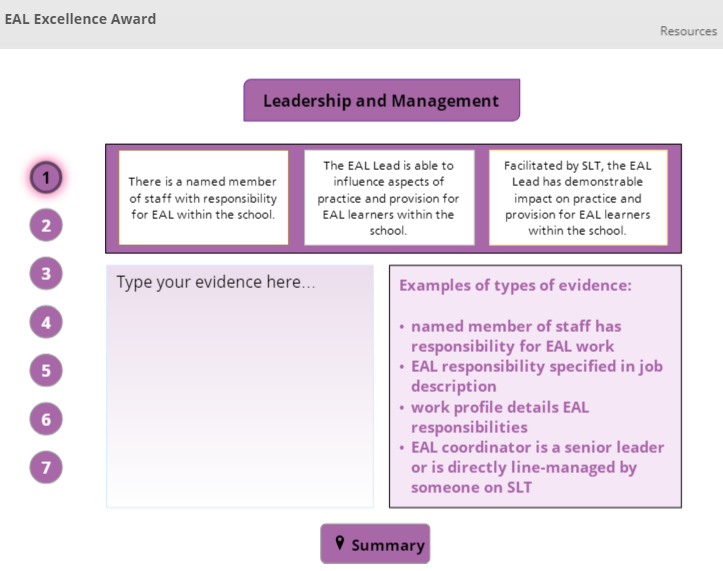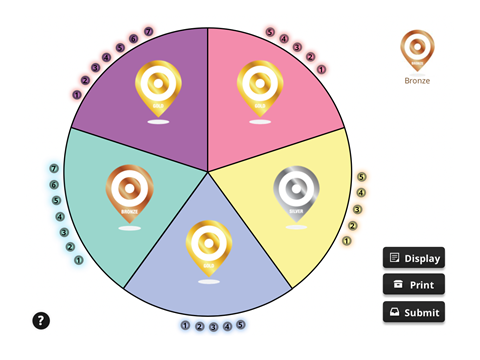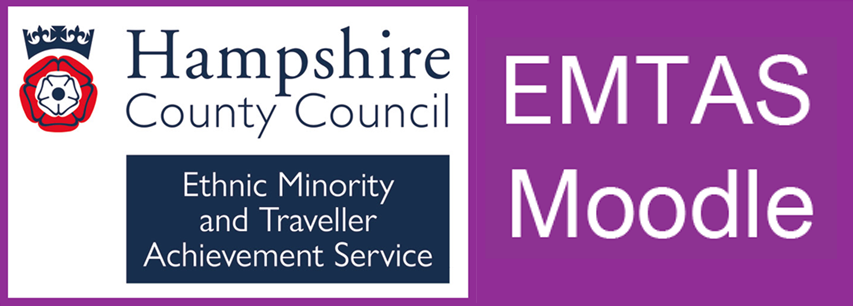Blog entry by Astrid Dinneen
Hampshire EMTAS Consultant Sarah Coles discusses how you can make sure you’re heading in the right direction.
EAL is a broad topic that touches on many different aspects of school life. Because of this, staff in schools, EAL Co-ordinators in particular, are given to wonder how they might know whether or not practice and provision in their setting makes the grade. Others want to identify not just areas for improvement but also ideas as to how they might achieve these improvements. This is where the EAL Excellence Award comes in.
The EMTAS Specialist Teacher Advisor team devised the EAL Excellence Award as a way of enabling schools to evaluate both strategic and operational aspects of their EAL practice and provision. It is an online, interactive tool that covers 5 core strands:
- Leadership and Management
- Data, Assessment & Progress
- Pedagogy and Practice
- Teaching & Learning
Parental and Community Engagement.
On screen, it looks like this:

© Copyright Hampshire EMTAS 2018
Within each strand is a series of statements at Bronze, Silver and Gold levels. Progression is clarified as the statements are linear and there is help with the supporting evidence element in the form of a list of possible examples. Practitioners click on the statement they feel most closely reflects current practice in their school and type into a text box the evidence they have to support their judgement.
This is an example of statements at Bronze, Silver and Gold from the first focus within Leadership and Management, together with examples of where the evidence might be found to support the school’s judgement:

© Copyright Hampshire EMTAS 2018
Once all the statements within one strand have been completed, practitioners can see the overall awarding level for that area, Bronze, Silver or Gold. Once all 5 areas have been completed, they can see the complete picture for their school with the overall awarding level being the lowest of the 5 strands.

© Copyright Hampshire EMTAS 2018
For example the school above is asserting they are at Gold level for Leadership & Management, Data, Assessment & Progress and Parental & Community Engagement, Silver for Teaching & Learning and Bronze for Pedagogy and Practice. For this school, the overall awarding level would be Bronze. The outcome, presented pictorially, means the EAL lead can readily identify areas of strength and places where some developmental work might not go amiss. In the example above, they might choose to focus on Pedagogy and Practice through their EAL Development Plan for the year, using the Excellence Award tool to support them to develop this area. Thus the tool enables EAL Leads in schools to work in a focused way, achieving a balance of strategic and operational tasks within their role, thereby ensuring they make best use of the time they have available for their EAL work.
When the EAL Lead has completed all statements in all strands of the EAL Excellence Award, they can submit their work to EMTAS. A validation visit will be arranged and if successful, a Bronze, Silver or Gold certificate, valid for 2 years, will be awarded to the school to acknowledge the work they do for their EAL learners.
The EAL Excellence Award includes access to resources such as model EAL Policies, suggestions on where evidence might be found and links to sources of further information and guidance. It links with the EMTAS suite of e-learning modules too, which practitioners can dip into to improve their knowledge of EAL Pedagogy or to find out more about the role of the EAL Co-Ordinator.
To find out more about how to get hold of the EAL Excellence Award to use in your school, or to talk about how you can be trained as a Validator to use the tool in schools outside of Hampshire, please contact Sarah Coles, sarah.c.coles@hants.gov.uk.
